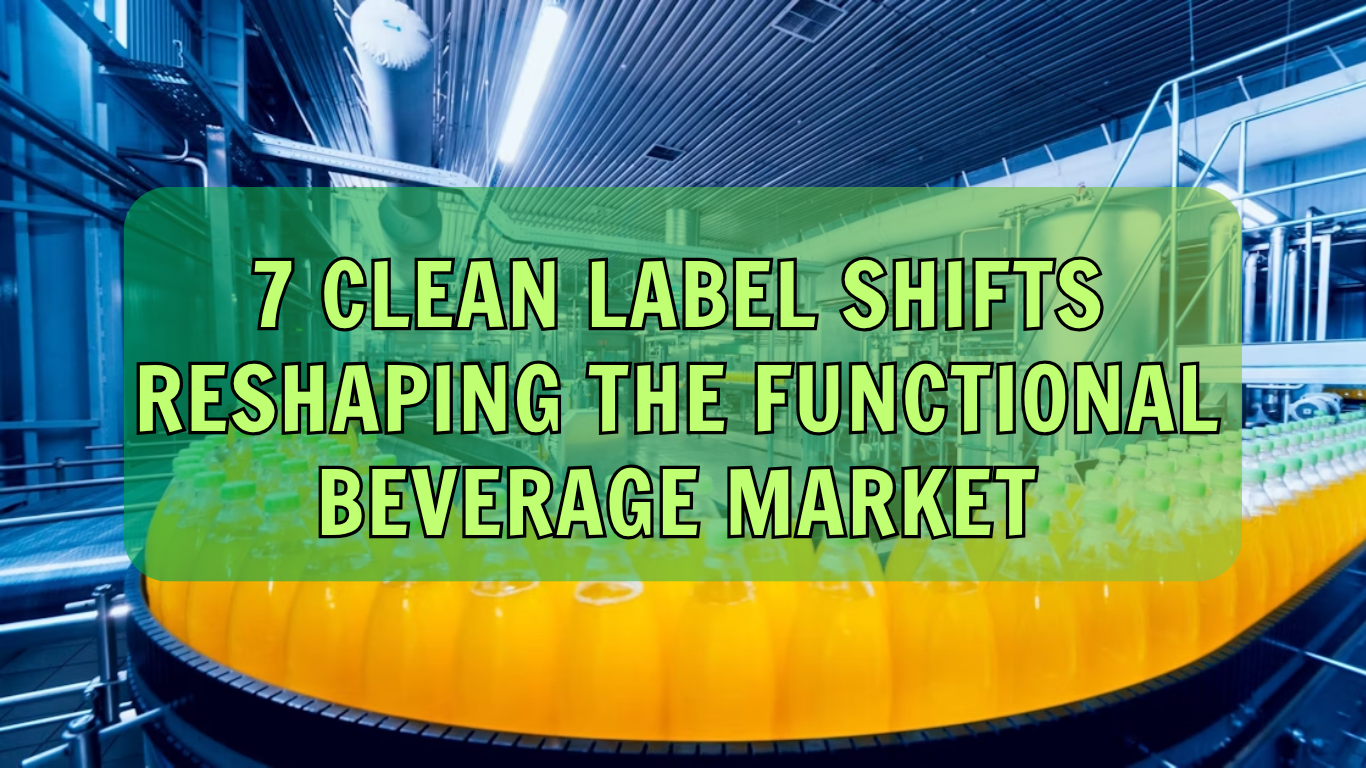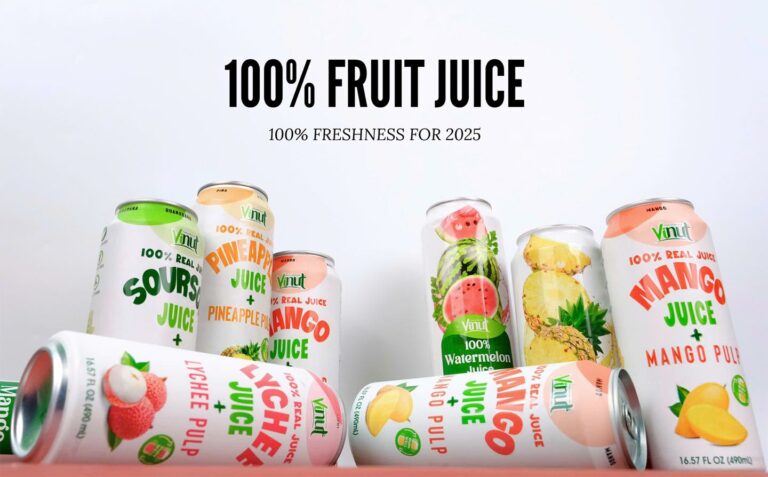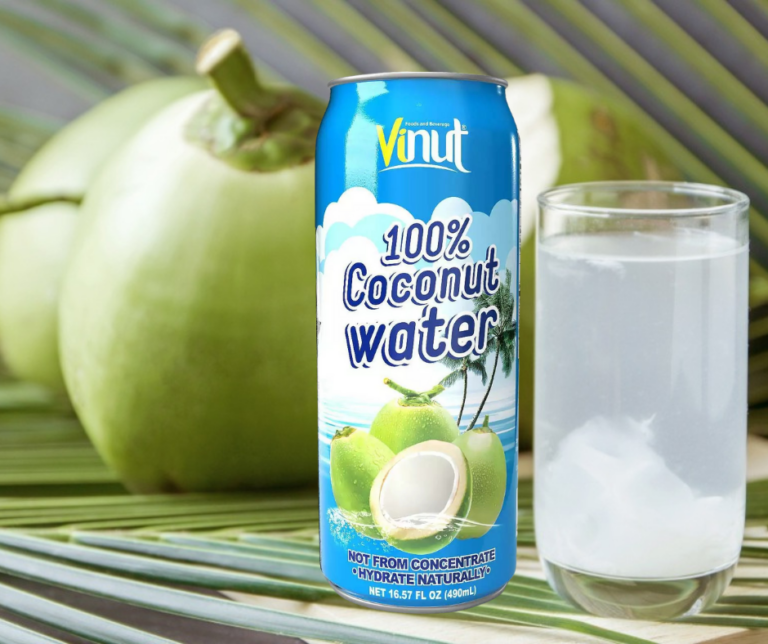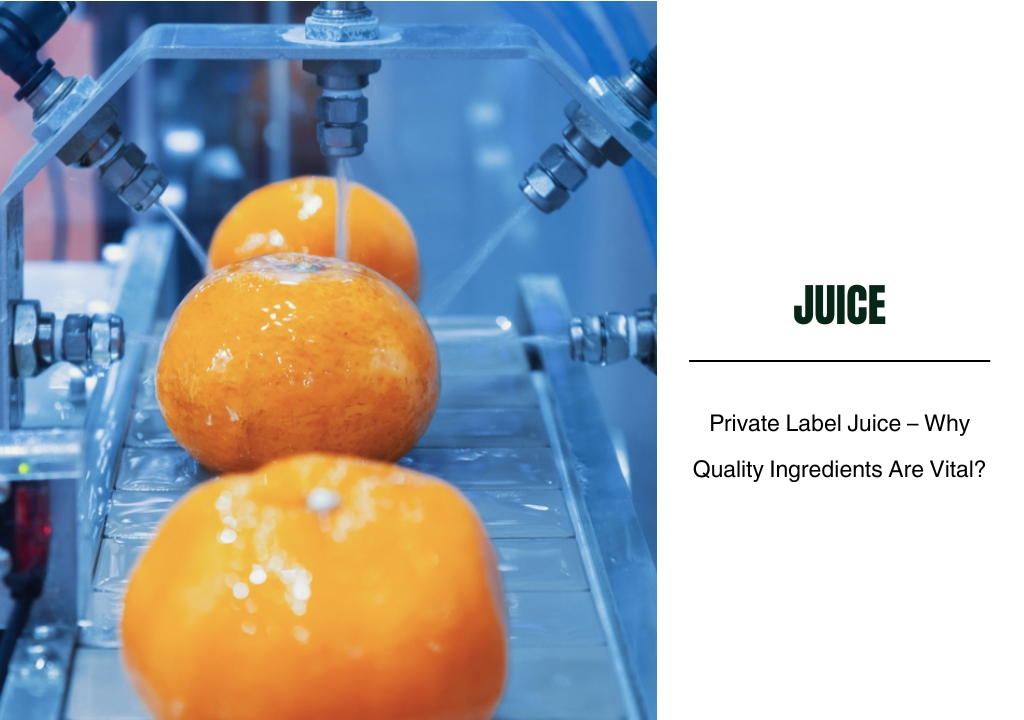7 Clean Label Shifts Reshaping the Functional Beverage Market

Clean label is no longer a trend—it’s a global shift redefining how consumers trust and choose functional drinks. Explore 7 key clean label transformations changing the beverage industry in 2025.
Clean Label: From Trend to Industry Standard
In 2025, the term clean label has evolved from a niche claim into a non-negotiable standard across the global beverage industry.
Consumers—especially Millennials and Gen Z—now demand more than just functional benefits like energy, hydration, or beauty. They want beverages made with real ingredients, without artificial additives, and with full transparency.
According to Innova Market Insights, three out of four global consumers say they would reconsider a purchase if the ingredient list on the packaging is unclear. Additionally, 58% emphasize that clear information about ingredients and sourcing is a key factor in building trust in a brand.

1. Simpler Ingredient Lists That Speak Clearly
Today’s buyers want to understand what they’re drinking—instantly. Clean label products typically include:
Recognizable ingredients (e.g., lemon juice, zinc, stevia leaf extract)
No E-codes, synthetic additives, or vague terms like “natural flavor”
Ingredient names consumers can pronounce without Googling
A 2024 FMCG Gurus report shows that 63% of consumers are more likely to choose a beverage with fewer than 10 ingredients, especially if they are plant-based or naturally derived.
2. Clean Label Transparency as a Trust Driver
Clean label isn’t just about the “what”—it’s also about the “why” and “where.” Functional beverage brands are now expected to:
Explain why each ingredient is used
Reveal sourcing details (e.g., “Green tea from Uji, Japan”)
Avoid masking sugar with misleading alternatives like “fruit juice concentrate”
A 2023 FMCG Gurus survey found that 66% of global consumers consider it important that food and drink products are healthy and nutritious—an indicator strongly linked to ingredient transparency and clean label trust.

3. Functional + Clean = The New Wellness Standard
Functional drinks—immunity shots, probiotic sodas, collagen waters—are booming. But without a clean label, consumers now see them as incomplete.
Popular clean label functional drink categories include:
Immunity: vitamin C, zinc, elderberry, echinacea
Digestive health: probiotics, kombucha, prebiotics
Natural energy: green coffee, guarana, matcha
Skin & beauty: collagen peptides, biotin, aloe vera
Functional beverages alone are no longer enough—today’s consumers demand both effectiveness and transparency, making clean label the new standard for trust.
4. Sustainability & Clean Label Go Hand in Hand
More than ever, clean label is expanding beyond ingredients—it now includes ethical sourcing and sustainable packaging.
Examples include:
Use of recyclable or compostable bottles
QR codes that trace ingredient origins and carbon impact
“Farm to bottle” messaging on product labels
According to the 2023 Buying Green Report by Trivium Packaging, 63% of consumers are now less likely to buy products with packaging that is harmful to the environment, and 90% of Gen Z respondents expressed a willingness to pay more for sustainable packaging
5. Minimalist Label Design = Maximum Shelf Impact
Clean label isn’t just about what's inside—it’s also about how clearly you present it.
The most effective clean label brands are using:
Large-font ingredient lists
Simple icons: “Vegan”, “No Artificial Sweeteners”, “Gluten-Free”
Minimalist packaging with calming colors and honest claims

6. Region-Specific Clean Label Expectations Are Emerging
As clean label goes global, regional differences are shaping how it’s implemented:
| Region | Clean Label Priorities |
|---|---|
| Europe | Ingredient origin, “free from” claims, environmental info |
| North America | Non-GMO, organic, low/no sugar |
| Asia-Pacific | Herbal infusions, plant-based functionals, gut health |
| Gulf/MENA | Halal-certified, no artificial colors, clear sourcing |
7. OEM & Private Labels Are Adopting Clean Label as a Core Offering
Clean label is no longer limited to legacy brands. OEM and private label drink producers are now building clean label into their core R&D strategy to meet global buyer expectations.
International retailers and distributors now prioritize:
Transparent formulas free from banned ingredients
Flexible labeling options (multilingual, QR-enabled, region-compliant)
Certifications such as Non-GMO, USDA Organic, or Halal
In the functional beverage supply chain, offering clean label OEM formulations is becoming a competitive necessity—not a premium.
Conclusion
The global demand for transparency, simple ingredients, and ethical production is pushing clean label beverages from trend to global standard. For brands, retailers, and distributors, clean label is no longer optional—it’s the new foundation of consumer trust.
👉 Partner with Nam Viet Group — a trusted OEM/ODM beverage manufacturer from Vietnam — to develop your clean label functional drink, built for global export and future-proofed for market trends.

